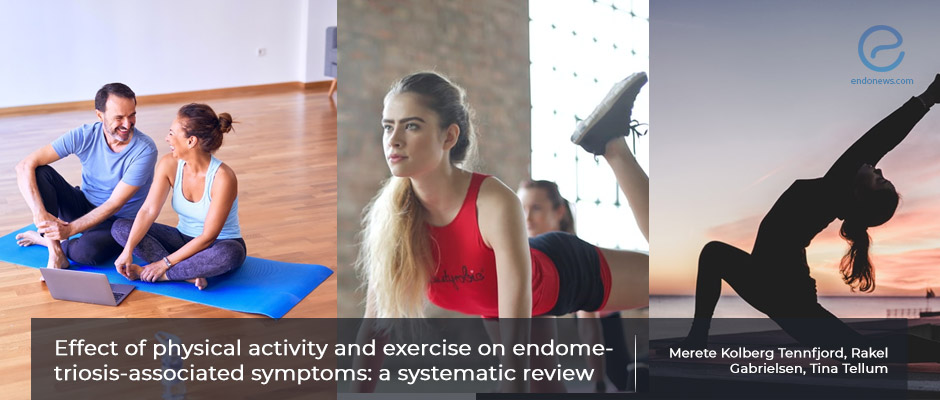Physical activity and exercise in reducing endometriosis symptoms
Feb 18, 2022
The role of physical activity and exercise on endometriosis-related symptom relief is yet to be elucidated
Key Points
Highlight
- Well-designed, methodological randomized controlled trials are needed to correctly evaluate the effects of physical activity and exercise on endometriosis-related symptoms.
Importance
- It is known that regular, high-intensity exercise creates an anti-inflammatory environment.
- This mechanism calls for physical activity and exercise as new therapeutic approaches in the symptomatic treatment of endometriosis.
What's done here
- This is a systematic review of the literature that evaluates the effect of physical activity and exercise for reducing endometriosis-related symptoms.
- By a search of 11 databases in accordance with PRISMA guidelines and eligibility, inclusion, and quality assessment, 3 studies were taken into account.
- Quality assessment, risk of bias, and exercise intervention assessment were performed on these studies.
- The effect of the intervention on pain, mental health, well-being, and pelvic floor dysfunction was evaluated.
Key results
- A total of 109 patients were included in these studies.
- The degree of daily pain was found to be decreased in one study, reduced stress levels were seen in one study.
- Even though some improvement was seen in pain intensity, stress levels, well-being, or self-image in these studies, the effect of physical activity and exercise alone could not be determined.
Strength and limitations
- The strengths include originality, rigorous search strategy, and methodological robustness.
- The limitations are the low grade of evidence that could be obtained from the previous studies, the small samples, confounding factors, heterogeneity of interventions, and poor reporting of details about the exercise intervention and outcome measures.
Lay Summary
The treatment modalities to date on endometriosis have focused on the symptomatic relief and management of chronic pain. Hormonal suppression sometimes shows intolerable side effects and is known to lose effect after some time. Surgical interventions may not provide a permanent solution. Non-pharmacological and less interventional supportive treatment methods have been getting popular. Physical activity and exercise for relieving the symptoms related to endometriosis have been recommended in the clinical guidelines as new approaches.
Tennfjord et al. from Norway have conducted a systematic review study in which they reviewed the literature to assess the outcomes of endometriosis symptoms in patients who were performing physical activity and/or exercise. The study was published in the October 2021 issue of the journal BMC Women’s Health.
A total of 11 databases were searched in accordance with the PRISMA guidelines. There were three studies that matched the inclusion criteria and were assessed in terms of quality. They included flexibility and strength training, cardiovascular fitness, and yoga.
There were a total of 109 patients with chronic pelvic pain in these studies with no provided history of prior treatment methods. Improvement was seen in pain intensity, stress levels, well-being, or self-image in these studies however, the effect of physical activity and exercise alone could not be determined. The degree of daily pain was found to be reduced in one study in which the scores in pain-related domains on Endometriosis Health Profile-30 were significantly lower in the yoga group. Only one study showed a decrease in stress levels.
The anti-inflammatory effect of regular, high-intensity exercise has been known however, the studies lacked the knowledge of exercise progression therefore the authors stated they could only speculate the possible effects of high-intensity exercise on endometriosis patients. The authors discuss the insufficiency of the existing literature on the effects of physical activity and exercise on endometriosis-related symptoms and add that there are a couple of ongoing randomized controlled trials that are investigating the core outcomes such as pain, quality of life, acceptability, and patient satisfaction and there is a need for more methodologically planned studies on the subject.
Research Source: https://pubmed.ncbi.nlm.nih.gov/34627209/
endometriosis chronic pelvic pain physical activity exercise symptoms pain pelvic stress well-being self-image

